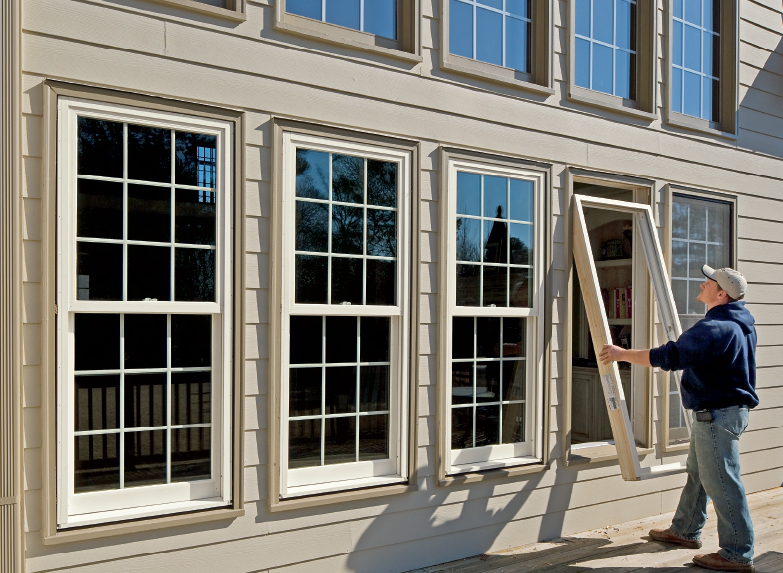There is no better way to save our beautiful planet from the detrimental effects of greenhouse gases than taking personal responsibility to minimize energy consumption.
By investing in replacement windows, you make your home energy not only efficient but also positively impact the environment. Going green helps cut down on carbon emissions, which otherwise may lead to global warming.
Ready for your new replacement windows? Here is why you shouldn’t back out of your plans to acquire the new windows:
Table of Contents
How Windows Save You Money and Reduce Energy Waste
1 – Enhanced home energy efficiency
New energy-efficient windows come designed with robust features, which include insulated frames and low-E coatings on the glasses (among others) hence the unmatched thermal properties.
Such windows offer the much-needed home comfort both in the winter and summer seasons as you don’t have to adjust your HVAC to manage your home’s temperature constantly. By locking warm air in during winter and warm air out in the summer, the windows work efficiently to ensure your cooling and heating system isn’t overworked.
2 – Less pressure on your heat and air conditioner
With robust insulation features, energy-efficient windows ensure your home stays warm in the winter and cool in the summer without necessarily having to put pressure on your heat and air conditioner.
This, therefore, implies fewer repairs on your system, which in turn, helps prolong its lifespan. Ultimately, it may reduce adding to the landfill.
3 – Protect your home’s interior elements
Ever wondered why your furniture or carpet looks old even though you just acquired it less than two years ago? Well, the chances are high that the harmful UV rays are getting their way through your windows.
Faded home interior element(s) is one good indication that it’s really time to invest in new replacement windows. The windows will not only protect your home from the UV rays but also enhance the beauty of your inner space by allowing in quality natural light.
You’ll keep the replaced furnishings and flooring out of the landfill.
4 – Reduced condensation
Old windows are prone to condensation, and if left unattended, can encourage mold growth, which can then cause respiratory diseases.
Replacing such windows with new ones helps reduce your exposure to such harmful stuff, thus staying safe throughout the seasons. You’ll keep your environment free of these dangerous growths.
But just how do you discern energy efficient windows from the ordinary ones? We turned to the Zen Windows, specialists in window replacements from Boston, MA for answers.
How to identify energy-efficient windows
Look out for the Energy Star symbol
The Energy Star symbol is an indication that the window meets the set standards, usually by the National Fenestration Rating Council, to ensure efficiency with regard to energy performance.
Such windows often feature low e-coating, insulated frames and sashes, and inert gases in between the panes, which all work together to enhance the insulating properties of the window. Go ahead and review the ratings provided by the NFRC on their energy performance label so as to get the most efficient window units for your needs.
This is the surest way to work your way through windows even if you’re completely new to windows’ thing. Why?
Because all energy star certified windows carry NFRC energy labels, they make it easier and the most reliable way to ascertain a window’s energy properties.
Know your climate
Knowing your area’s climate is a crucial step in identifying energy-efficient replacement windows that will match your energy needs.
In colder climates:
- Select windows with low-E coatings and are gas-filled to help reduce heat loss.
- Settle for a low U-factor for enhanced thermal resistance. U-factor determines the rate at which window units conduct non-solar heat flow.
In warmer climates:
- Choose windows that feature coatings to help reduce heat gain.
- Low solar heat gain coefficients also help reduce heat gain.
However, a combination of both low SHGCs and low U-factors is a sure way to maximize your energy savings if you hail from an area with temperate climates—an area that experiences both hot and cold seasons.
Consider consulting your supplier
If, for some reason or another, you are unable to check out the windows or compare them by yourself before buying, then consult with your supplier.
The supplier should be able to advise on the design, style, and window material that best suits your architectural and energy needs; which is in addition to offering proper window installation services.
Seek three quotations from different companies to ensure you land the best deal.
The Takeaway
Getting new windows can feel like an overwhelming chore. However, it’s one that can increase your home’s energy efficiency.
Replacement windows come in different styles, designs, and options to choose from, which can, therefore, be a bit confusing, especially to a first-timer on window issues. From glass coating to the window designs, ensure you choose an energy-efficient window material for maximum returns on your investment.
And though some homeowners may want to self-install their windows in a bid to cut down on costs, it’s sometimes the riskiest decision in the event that something goes amiss. Besides time wastage, such homeowners are forced to shoulder any damages that may arise to the windows in the process of installation; which, of course, would have been catered for by the manufacturing and installation company.
So, to stay safe in this process, hire a reputable window company for window materials supply and installation. Remember, proper installation enhances a window’s energy efficiency level.













